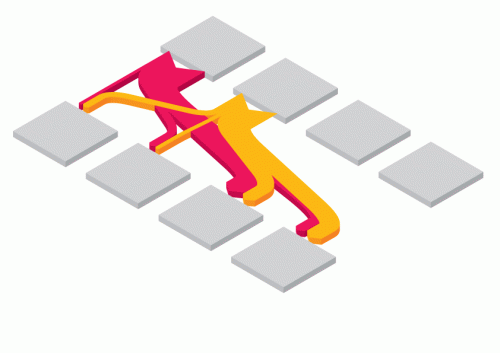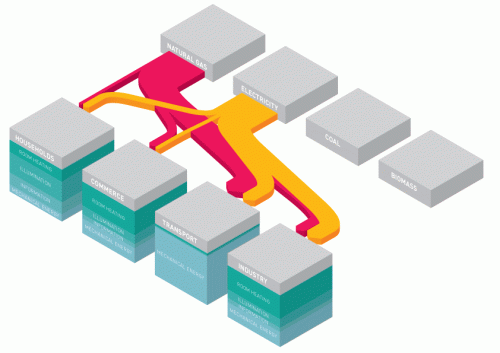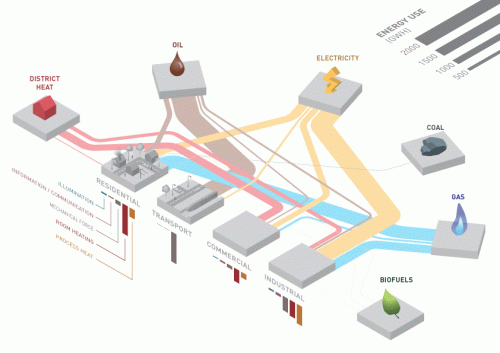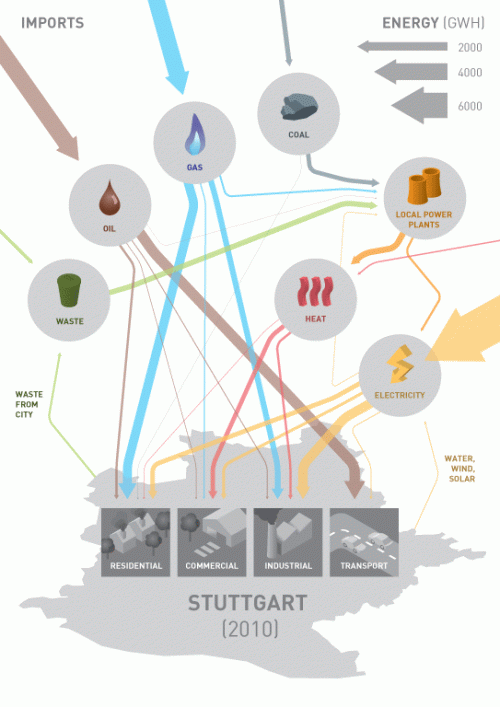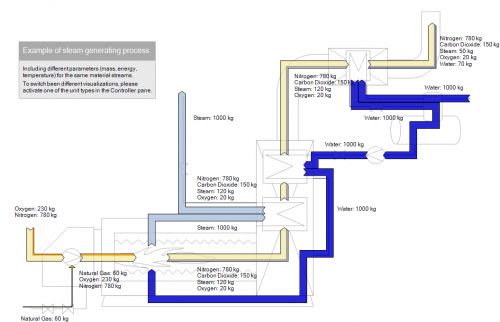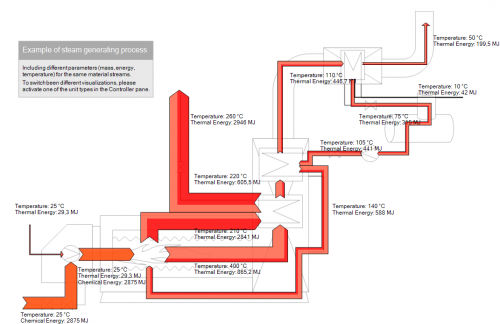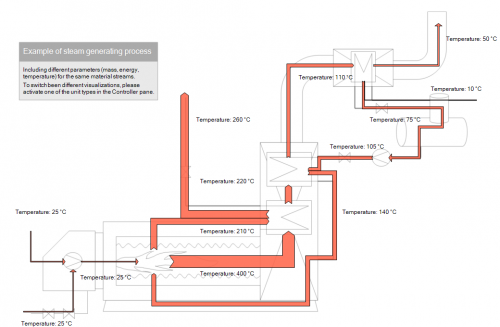I really liked Will Stahl-Timmins’ article on how he developed an infographic on energy consumption in a city.
Will’s blog is called ‘Seeing is Believing’ and his central claim is that information graphics are “the visual transformation of data into understanding”. I agree: infographics are more than just a diagram and labels. They are much more “visual” and their design elements add to a better understanding. Diagrams convey data, infographics convey information. Typically they also have a broader audience: you would find a diagram in a scientific paper, but an infographic in a daily newspaper.
The article ‘Visualising city energy policies’ gives a very good insight into the reasoning of an infographer/designer when creating an infographic. Will describes how he started out from an ordinary Sankey diagram, to get to an infographic step-by-step. This involved studies of different alternatives, sketches on paper, discussions with colleagues, presentations, and many different versions of the infographic in Illustrator…
He experimented with an isometric or what he calls a “pseudo-3D” perspective, but also discovered some shortcomings in using them.
Crossing arrows were an issue. So were the stacked nodes (cubes) that hid parts of flows and were difficult to label.
The “intermediate” outcome of his meticulous work was the below infographic. It seemed to have been a long learning process to achieve this result.
Will went on to include feedback he had gotten from fellow researchers, and decided to add more information on imported energy. At the same time he had to reduce the level of detail. This is the final infographic.
Good work, I think! The resulting infographic is not a genuine Sankey diagram anymore. There are only three arrow widths left, quantities are clustered in these groups. But as I said, an infographic has a different purpose.
It is not mentioned clearly how this infographic will finally be used, and who the target audience is. I imagine it will be used as an illustration in a brochure that summarizes the findings of the URGENCHE project, but to a wider, non-technical audience.
Make sure you read the full blog post at ‘Seeing is Believing’.
